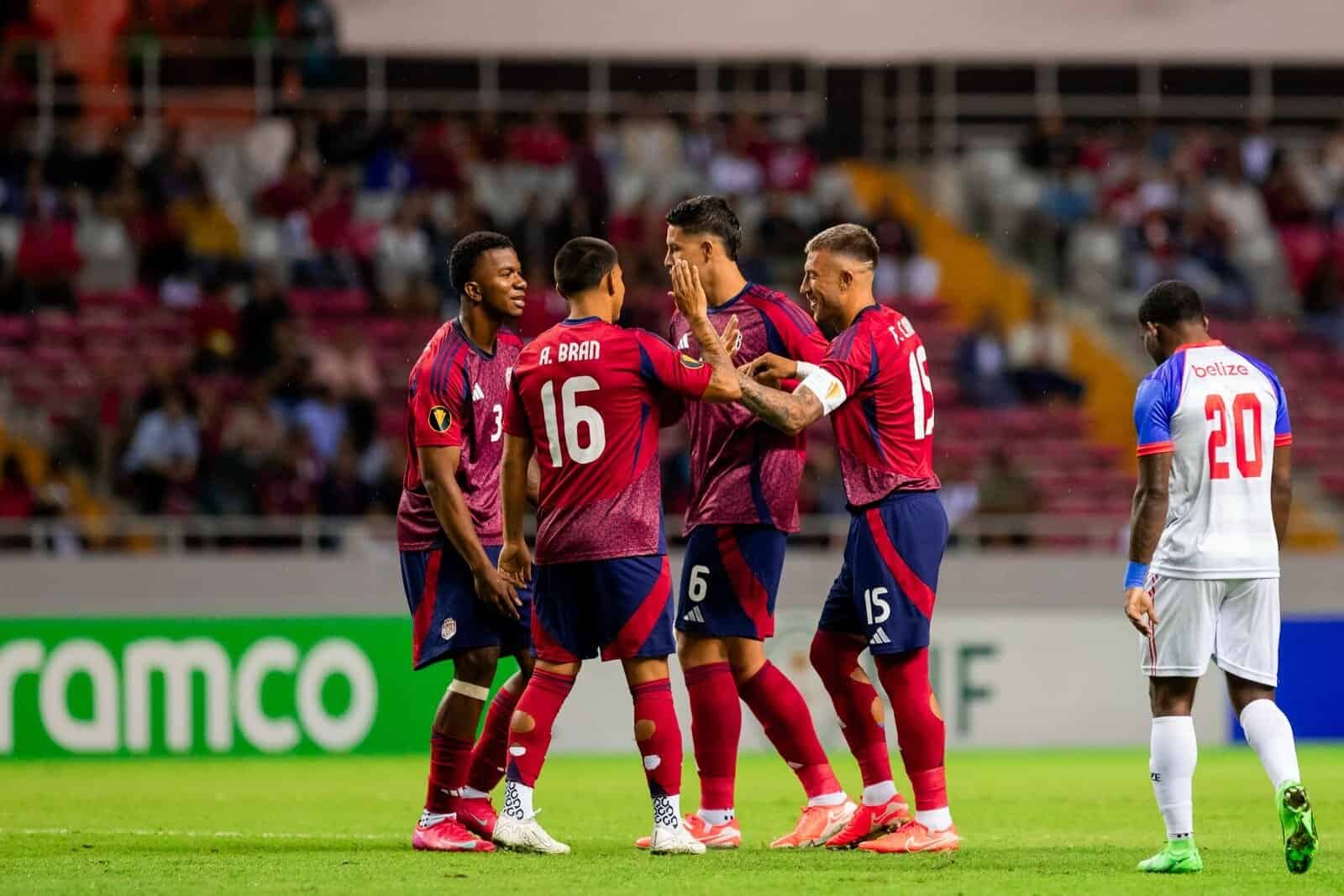Costa Rica’s national soccer team faces a defining stretch in their bid to reach the 2026 World Cup. With just two points from their first two games in Group C of the Concacaf qualifiers, La Sele sits in a tight spot behind leaders Honduras, who hold four points.
Haiti also has two points, while Nicaragua trails with one. The team drew 0-0 with Nicaragua in their opener and followed up with a 3-3 thriller against Haiti, where forward Manfred Ugalde scored twice to keep them in the fight.
Tomorrow, Costa Rica travels to San Pedro Sula to take on Honduras at Estadio General Francisco Morazán. It’s a tough away test in a hostile setting, where the Ticos have claimed just one qualifying win in the last 24 years.
Then, on October 13, they return home to San José to host Nicaragua. Coach Miguel “Piojo” Herrera knows the math: six points from these two would put them back in control, but even four could steady the ship. “We have to go out and get the result,” Herrera said recently. He admits a draw in Honduras wouldn’t be the end of the world, given the pressure and atmosphere there.
Herrera, the Mexican tactician, has shifted gears for this window by leaning on veterans. He brought back midfielder Celso Borges, now 37, along with Allan Cruz and defender Kendall Waston, both absent for some time. It’s a move to add stability amid the early stumbles. Captain Keylor Navas, the former Real Madrid star now with Pumas in Mexico, backed the choice.
“There are more experienced players who can help us handle these situations,” Navas noted upon arriving for camp. Navas himself dealt with a minor ankle issue but trained fully, as did Ugalde, who joined from Spartak Moscow. However, Borges is nursing a slight injury, adding a layer of caution to preparations.
The squad trained twice yesterday, with a final session planned for today before heading out. Young forward Warren Madrigal returns after recovering from a fibula break during the 2025 Gold Cup, and Aaron Murillo earns his first call-up.
These additions aim to blend youth with know-how, especially after fans booed Herrera following the Haiti draw. Qualification remains in their hands, as Herrera stressed in recent interviews, but alarms are sounding among supporters who remember the 2014 team’s quarterfinal run in Brazil.
Honduras, under Colombian coach Reinaldo Rueda, views this as a national priority. They drew with Costa Rica in September and beat Nicaragua 2-0, positioning them well. But injuries hit them too—players like Denil Maldonado, Edwin Rodríguez, and Dixon Ramírez are out, leading to calls for replacements like Bryan Acosta.
Honduran forward Anthony “Choco” Lozano called the game a “do-or-die” for his side, eager to build on their early edge. Defender Kervin Arriaga acknowledged Costa Rica’s strength but expressed confidence.
Historically, Costa Rica holds the upper hand with six World Cup appearances to Honduras’ three, but Navas downplayed that. “The games still have to be played; not all of them are the same,” he said. A loss to Honduras could leave Herrera with no room for mistakes, potentially costing him his job. Beyond the field, missing the tournament would hit hard economically—estimates suggest a $120 million loss in tourism, sponsorships, and related boosts.
Across Concacaf, other favorites struggle too. Panama sits third in Group A with two points from draws against Suriname and Guatemala, facing El Salvador away on October 10 before hosting Suriname. Coach Thomas Christiansen admitted results haven’t met expectations but insisted it’s still up to them.
Jamaica leads Group B with six points after wins over Bermuda and Trinidad and Tobago, close to securing a spot if they keep winning. Coach Steve McClaren stays grounded, focusing on points to control the group.
For Costa Rica, these next games test resolve. A strong showing could quiet doubts and propel them toward a seventh World Cup. Fans here in Costa Rica hope the mix of experience and fight turns the tide, but results will tell the story on the pitch.






